Nestled in the heart of the Caribbean, Virgin Islands National Park is a treasure trove of natural beauty, rich history, and vibrant marine life. How much do you know about it? Read on, then try your hand at our Virgin Islands Trivia Contest.
How Virgin Islands National Park Was Born
The journey toward creating Virgin Islands National Park began in the mid-20th century when environmental conservation was gaining momentum in the United States. Laurance Rockefeller, a prominent businessman, conservationist, and philanthropist—and grandson of oil baron John D. Rockefeller—played a pivotal role in the establishment of Virgin Islands National Park.
Captivated by the island’s natural beauty during a visit in the 1950s, Rockefeller recognized the need to preserve the island’s unique environment for future generations to enjoy. At the time, St. John was a largely undeveloped and sparsely populated island, making it an ideal candidate for conservation.
Rockefeller’s commitment to conservation led him to purchase large tracts of land on St. John Island. His goal was to protect the island’s natural resources and prevent unchecked development. In 1956, Rockefeller donated approximately 5,000 acres of this land to the National Park Service, laying the foundation for what would become Virgin Islands National Park.
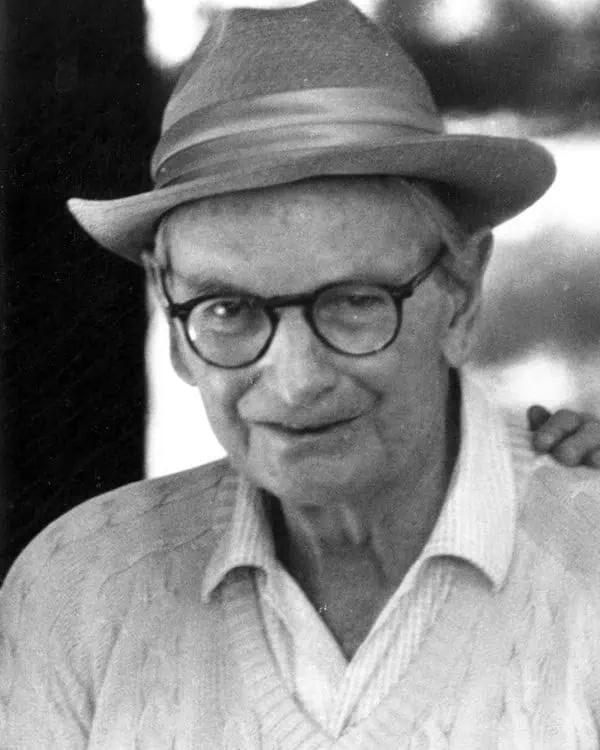
Rockefeller’s generous donation, combined with additional land acquisitions by the government, led President Dwight D. Eisenhower to sign the legislation establishing Virgin Islands National Park on August 2, 1956. This marked a significant milestone in the history of American conservation, as it was one of the first national parks to be created outside of the continental United States.
The establishment of the park came with its challenges. The local community had mixed reactions, with some residents concerned about the impact on their livelihoods and traditional ways of life. However, over time, many came to see the value of preserving the island’s natural resources and the potential benefits of tourism.
Today, Virgin Islands National Park is a beacon of conservation success. It protects diverse habitats, from lush tropical forests and white sandy beaches to vibrant coral reefs teeming with marine life. The park also safeguards important cultural sites, including ancient petroglyphs left by the Taino people and historic plantations that tell the story of the island’s colonial past.
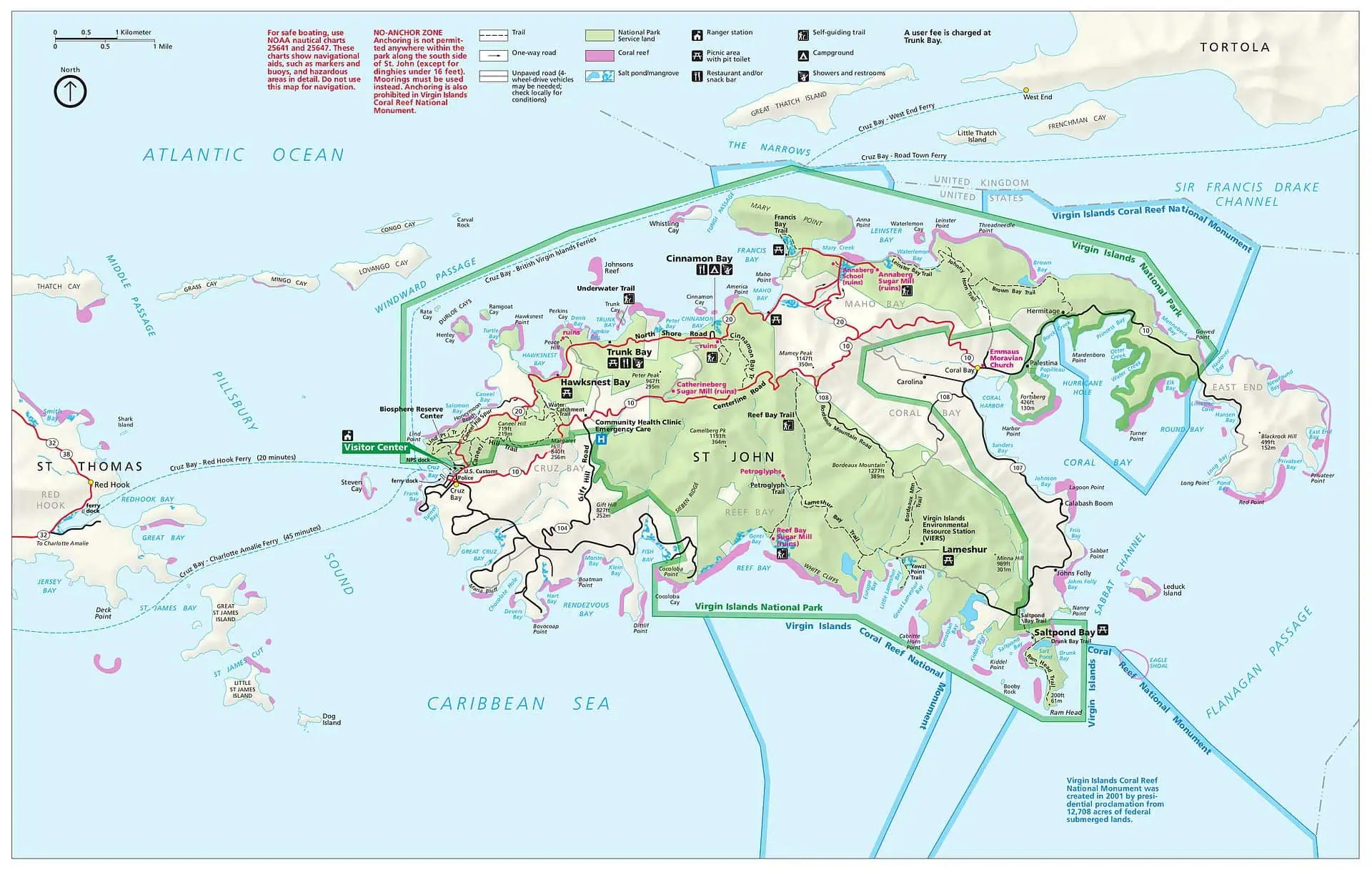
Underwater Treasures
Many visitors to Virgin Islands National Park might not realize that some of the park’s most captivating treasures lie beneath the turquoise waves. Approximately 60% of Virgin Islands National Park is underwater, offering an aquatic paradise filled with vibrant marine life, stunning coral reefs, and hidden wonders waiting to be discovered.
The park’s diverse marine environment comprises habitats ranging from seagrass beds and mangrove forests to intricate coral reef systems. These underwater ecosystems are home to a variety of marine species, making the park a haven for snorkelers, divers, and marine enthusiasts. Among the park’s underwater residents are colorful tropical fish, graceful sea turtles, playful dolphins, and even the occasional nurse shark, all coexisting in a delicate balance.
Visitors can engage with the park’s marine world through a variety of activities, from guided snorkeling and diving tours to kayaking and paddleboarding. These experiences offer visitors a closer look at the park’s coral reefs, which include elkhorn, staghorn, and brain coral formations, which are vital to the health of the marine ecosystem. They provide shelter and food for countless marine species, support commercial and recreational fisheries, and protect the shoreline from erosion by buffering the impact of waves.
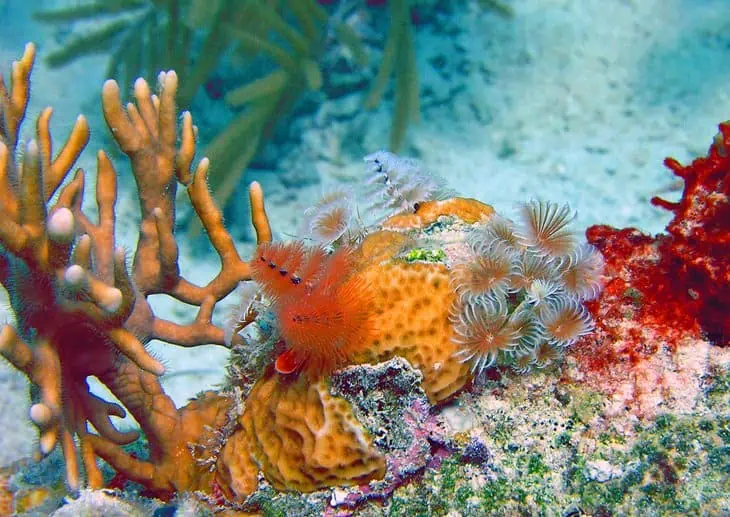
Virgin Islands National Park is dedicated to marine conservation efforts, working tirelessly to preserve these precious underwater environments. Initiatives include coral restoration projects, marine habitat protection, and public education programs aimed at promoting sustainable tourism and environmental stewardship. By raising awareness about the importance of marine conservation, the park ensures that its underwater wonders can be enjoyed by future generations.
The Taino People
Long before the arrival of European explorers, the picturesque island of St. John was inhabited by the Taíno people. These indigenous inhabitants left a permanent mark on the land, with their culture, art, and way of life continuing to inspire and educate us today.
The Taíno were a branch of the Arawak people who originally migrated from the Orinoco Basin in South America. By the time of European contact in the late 15th century, the Taíno had established thriving communities across the Greater Antilles and the northern Lesser Antilles, including the Virgin Islands.
The Taíno society was structured and well-organized, with communities led by a cacique (chief). They lived in bohíos (circular houses) made of wood and thatch, and their villages were often strategically located near fertile land and water sources. The Taíno practiced agriculture, cultivating crops such as cassava, maize, sweet potatoes, and tobacco. They were also skilled fishermen and navigators, crafting canoes from tree trunks to travel between islands.
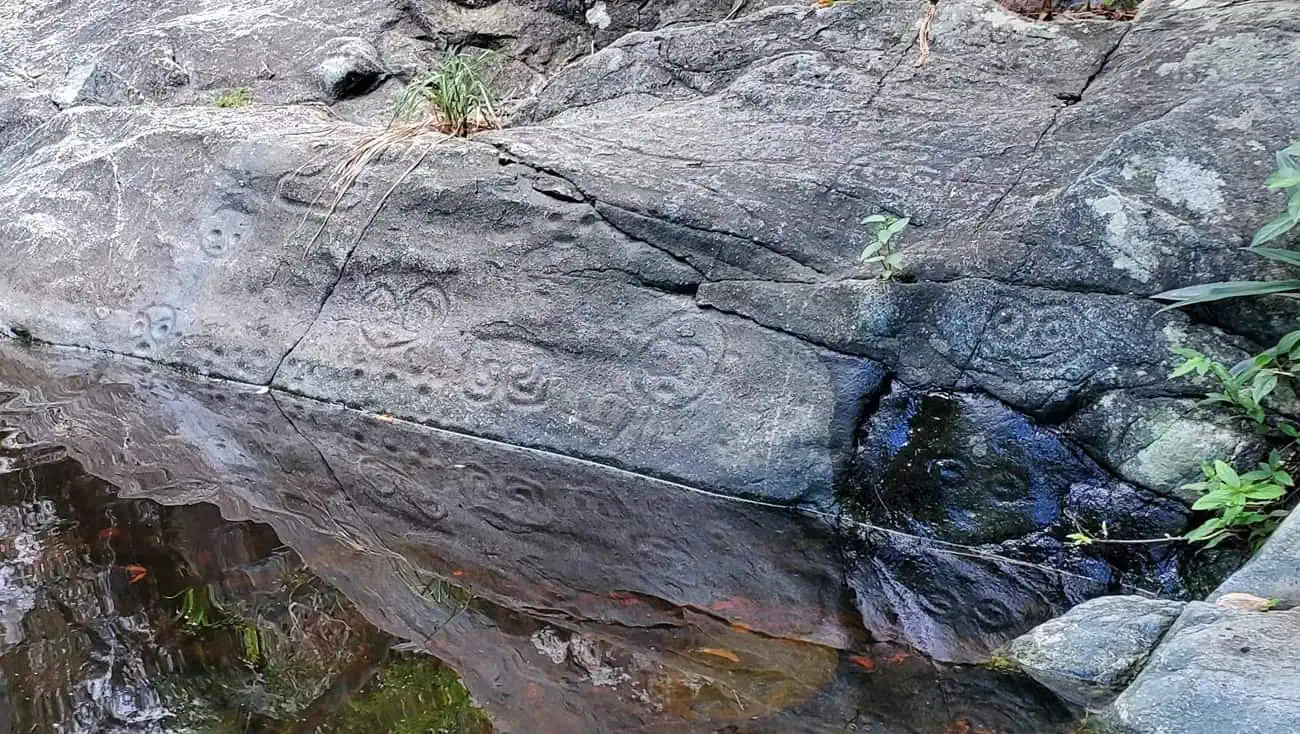
The arrival of Christopher Columbus in 1493 marked the beginning of significant changes for the Taíno people. The Europeans’ colonization efforts led to the decline of the Taíno population due to disease, enslavement, and violent conflict. Despite these hardships, the Taíno legacy endured through cultural exchange and the blending of traditions, which influenced the Caribbean’s cultural mosaic.
Today, Virgin Islands National Park serves as a custodian of Taíno heritage. The park’s archaeological sites and petroglyphs stand as a testament to the Taíno’s presence and resilience. Visitors to the park can explore these historical landmarks and gain a deeper understanding of the Taíno’s way of life and their connection to the land.
Trunk Bay Underwater Snorkel Trail
Imagine swimming through crystal-clear waters, surrounded by vibrant coral reefs and schools of tropical fish, with the sun casting shimmering patterns on the seabed below. This heavenly scene is a reality at Trunk Bay, one of the most picturesque spots in Virgin Islands National Park. Famous for its pristine beach and stunning underwater scenery, Trunk Bay is home to the unique and captivating Underwater Snorkel Trail—a must-visit destination for snorkelers and nature enthusiasts.
The Trunk Bay Underwater Snorkel Trail is a 225-yard-long underwater path marked by interpretive plaques that guide snorkelers through the coral reefs. These plaques provide interesting facts about the various coral formations and marine species that inhabit the area.
As you snorkel along the trail, you’ll encounter an array of coral types, including elkhorn, staghorn, and brain coral, each hosting a diverse community of marine life. Parrotfish, angelfish, sergeant majors, and other colorful fish dart among the coral, while sea fans sway gently with the currents. The trail’s clear, shallow waters make it accessible for snorkelers of all levels, from beginners to seasoned enthusiasts.
Trunk Bay Underwater Snorkel Trail provides an unforgettable journey through some of the Caribbean’s most stunning underwater landscapes. As you swim among the coral reefs and colorful fish, you’ll gain a deeper appreciation for the beauty and fragility of the ocean’s ecosystems.
Annaberg Sugar Plantation
Located within the lush landscapes of Virgin Islands National Park, the Annaberg Sugar Plantation stands as a poignant reminder of the island’s colonial past. Once a thriving center of sugar production, this historic site now offers visitors a glimpse into the complex history of the Caribbean.
The Annaberg Sugar Plantation was established in the late 18th century, during a time when the Caribbean was a major hub for sugar production. Sugar, often referred to as “white gold,” was a highly lucrative commodity, driving economic growth and development in the region. The plantation relied heavily on the labor of enslaved Africans who worked under harsh conditions to cultivate sugarcane and produce sugar, molasses, and rum.
The site features several well-preserved structures that provide insight into the daily workings of the plantation, including the sugar mill, boiling house, slave quarters, and the overseer’s house. The plantation is more than just a historical site; it is a symbol of the cultural and social dynamics of its time. The plantation system was a significant part of the Caribbean’s colonial economy, but it also played a crucial role in shaping the cultural landscape of the region. The blending of African, European, and indigenous influences gave rise to a unique Caribbean culture that is still evident today.
Today, the Annaberg Sugar Plantation is managed by the National Park Service and is open to the public. Visitors can take guided tours that provide detailed historical context and personal stories of the people who lived and worked on the plantation. The site also features interpretive signs that offer insights into the various processes and structures found on the plantation.
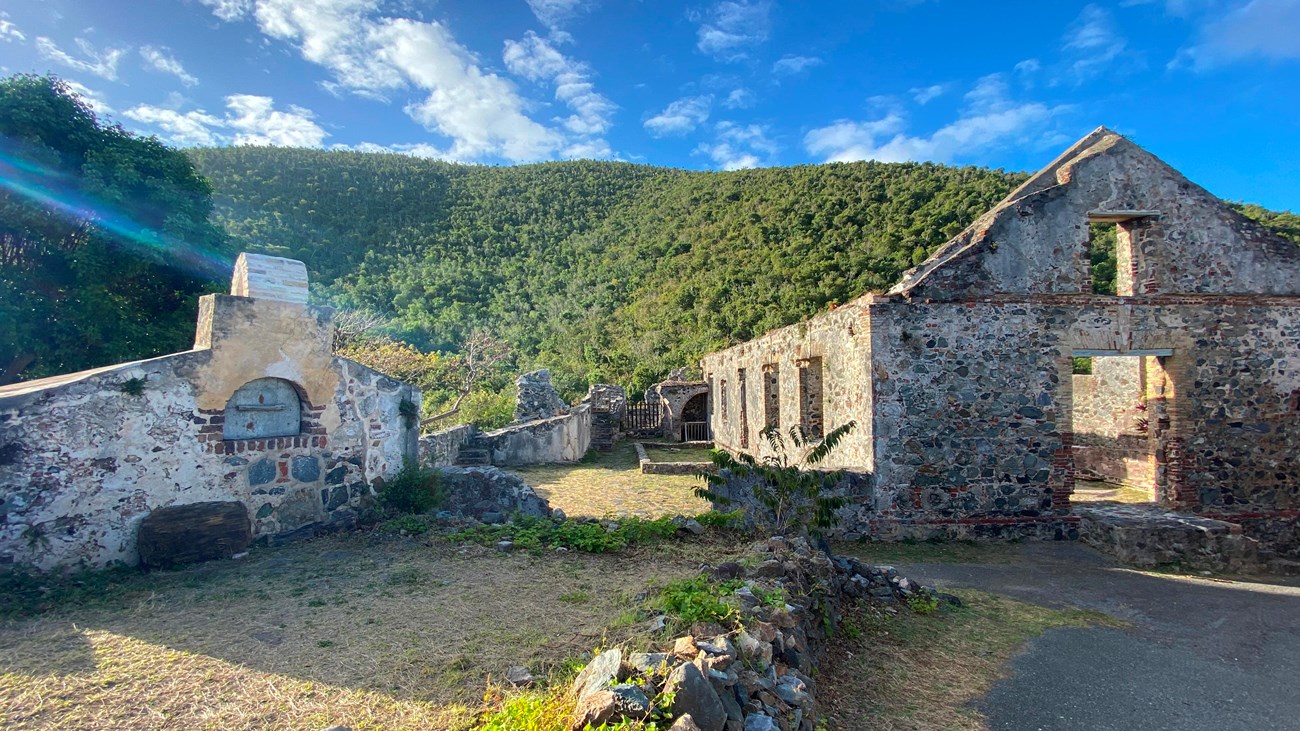
Top photo of Honeymoon Beach and Salomon Bay on St John, Virgin Islands, by Bradley Furlow

